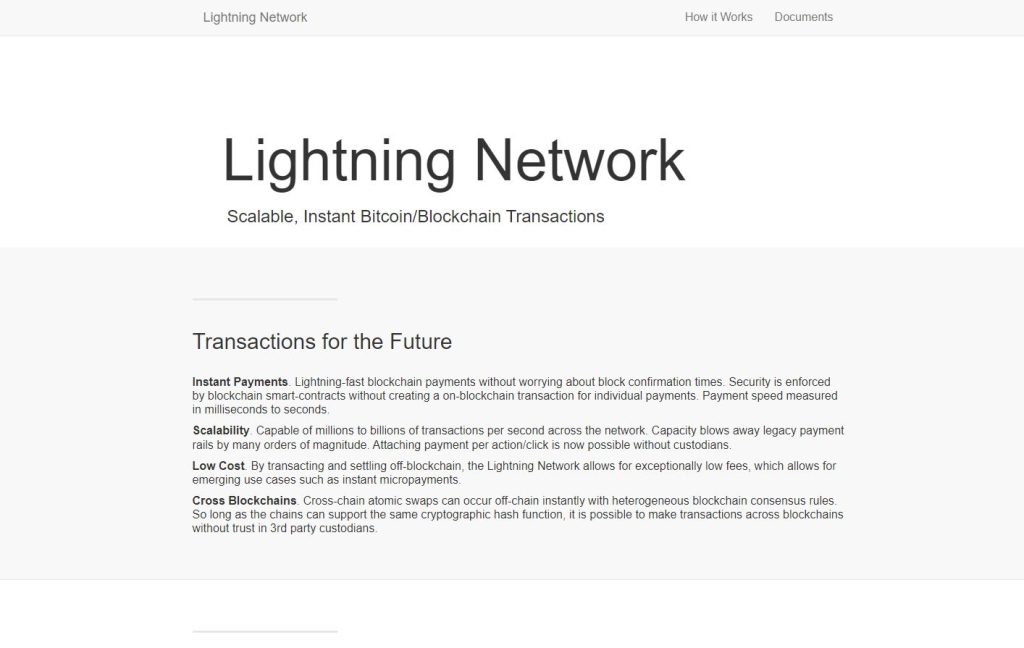Major cryptocurrency exchange Coinbase is amplifying its Bitcoin (BTC) transfer capabilities with the integration of the Bitcoin Lightning Network. This integration empowers users to choose between the traditional Bitcoin network and the Lightning Network for their BTC transactions, offering faster and cheaper options.
⚡We’re thrilled to announce that @Coinbase is rolling out support for the #Bitcoin Lightning Network powered by Lightspark🤝Coinbase customers can instantly send, receive, or pay with Bitcoin on Lightning directly from their Coinbase account. Give it a try yourself in your… pic.twitter.com/bfxA5PMHmN
— Lightspark (@lightspark) April 30, 2024
The Bitcoin Network Has Struggled With Transaction Speed And Cost Limitations
Due to its processing, confirming a single transaction can take anywhere from 10 minutes to 2 hours. The Lightning Network, operating as a layer-2 solution on top of the Bitcoin blockchain, aims to tackle these issues. By facilitating transactions off the main blockchain, the Lightning Network boasts near-instantaneous transfers at significantly lower fees.
However, there are some nuances to consider. Coinbase warns that sending BTC via Lightning to certain self-custody wallets, where users hold their own private keys, might encounter delays or even failures. These discrepancies can arise from unique implementations or fee structures within these wallets that may not fully align with the Lightning Network’s functionalities.
For users opting for the Lightning Network, Coinbase charges a processing fee of 0.1% of the transfer amount. To facilitate this integration, Coinbase partnered with Lightspark, a leading Lightning payments solution provider. Lightspark is headed by David Marcus, the former president of PayPal, who views this collaboration as a pivotal moment in developing practical solutions for online payments
Coinbase’s Approach Uses A “Remote-key Signing Implementation,” According to Lightspark’s Website.
This setup ensures security by allowing Coinbase to retain control over the Lightning signing keys, while Lightspark manages the Lightning node itself. This division of responsibilities safeguards Coinbase users while capitalizing on Lightspark’s expertise in running the Lightning node infrastructure.
Viktor Bunin, a protocol specialist at Coinbase, explained that several factors fueled their decision to integrate the Lightning Network. Bunin cited the network’s continuous growth and user adoption, the maturing technology underpinning it, and Coinbase’s long-term vision of achieving one-second transaction times and one-cent transaction fees for on-chain payments. Bunin further emphasized that this integration marks a significant milestone for the cryptocurrency ecosystem.
The Lightning Network Won’t Be On Coinbase Wallet Anytime Soon
At present, there are no immediate plans to incorporate the Lightning Network into Coinbase’s non-custodial wallet, Coinbase Wallet, or any of its other services and products, according to Bunin. The company intends to keep a close watch on the growth and adoption of the Lightning Network among its users to determine whether to integrate it into services like Coinbase Wallet or Coinbase Commerce in the future.
Bunin expressed optimism about the potential of Layer 2 technologies, citing that approximately 35% of Ethereum transactions were conducted via Layer 2 protocols, including the Coinbase-incubated Base network. He noted significant differences in the usage, adoption, and traction of Layer 2 technologies across Bitcoin and Ethereum but anticipates an overall increase in Layer 2 usage as customers continue to seek faster and more cost-effective transaction options.
Coinbase’s Adoption Of The Lightning Network Aligns With A Broader Trend

Several of its competitors, including Binance (July 2023), Kraken (2022), and Bitfinex (late 2019), had already incorporated this technology. By integrating the Lightning Network, Coinbase offers users a wider range of options for transferring BTC, catering to those who prioritize speed and cost-efficiency. This move is likely to further accelerate the adoption and development of the Lightning Network within the cryptocurrency space.
Coinbase’s integration came later as the company chose to carefully assess the growth and adoption of the Layer 2 technology before implementing it. According to Bunin, a spokesperson for Coinbase, the company’s mission to enhance economic freedom globally underpins its support for Bitcoin, and the decision to adopt Lightning was influenced by the network’s continued growth, the maturity of the technology, and the company’s objective to reduce onchain payment times to one second with costs as low as one cent.
Additionally, Coinbase has invested in several Bitcoin-related projects through its venture arm, including the self-custodial storage solution Casa, the Layer 2 rollup BOB, and the decentralized exchange Portal.
- SEC Files Final Redacted Remedies Brief Reply, Prominent Lawyers React
- Broader Crypto Market Expected to Surge Following Hamas Ceasefire Proposal to Israel
- Russians Sought Refuge in Tether (USDT) Amid Wagner Tussle
- Frankfurt Hosts Hotly-Anticipated Crypto Assets Conference 2023 Late March
- Frankfurt School of Finance & Management to Hold Crypto Assets Conference 2022 on April 4
- Building Secure Blockchain Systems: An Exclusive Interview with ARPA and Bella Protocol CEO Felix Xu
- Building The “De-Facto Crypto Trading Terminal”: An Exclusive Interview with Aurox CEO Giorgi Khazaradze
- Building a New Global Financial System: An Exclusive Interview With Tyler Wallace, Analytics Head at TrustToken
- “Solana is the Promised Land for Blockchain” — An Exclusive Interview with Solend Founder Rooter
- El Salvador: Where The Bitcoin Revolution Begins With A Legal Tender

 Why Trust Us
Why Trust Us












